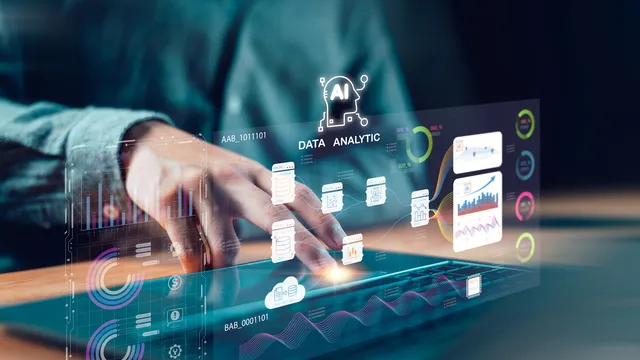5 Differences Between Business Intelligence and Data Analytics

The internal business activities of a corporation are the main focus of the data analytics field known as business intelligence (BI). Traditionally, business intelligence has been linked to data collected by employees of a company and then given to help them make better decisions and enhance business operations.
Data analytics differs from business intelligence (BI) in that the latter concentrates on analysing data in order to extract insights, trends, and opportunities that may be utilised to improve performance through the creation of new business models or even entire sectors.
What is Business Intelligence?
The phrase “business intelligence” (BI) refers to the integration of data warehousing, data administration, data analysis and visualisation and business processes to produce an intelligent system capable of timely decision support. A subset of business intelligence called data analytics analyses data using statistical and mathematical techniques to find and helps for decision-making.
Business intelligence software enables users to swiftly make well-informed decisions by keeping an eye on crucial business operations. By offering actionable intelligence, BI software assists companies in tracking performance, seeing issues early, optimising resources, and making smarter decisions.
How Business Intelligence can be Used
The process and method of gathering, organising, evaluating, and presenting data to assist an organisation in making better decisions is well known business intelligence. Applying business intelligence tools to data to enhance decision-making is known as data analytics. Business development services may help you manage your market through market capture if you want to expand your business, learn how to dominate your market and move up the Google search engine rankings.
Business intelligence tools come in a wide variety, each with advantages and disadvantages of its own. Relational databases, text analysis engines, reporting tools, visualisation engines and big data platforms are the most popular categories of BI technologies.
Because they offer a flat structure that is simple to query and analyse, relational databases are the most popular kind of business intelligence tool. They are also ideal for storing massive volumes of data. But when it comes to constructing reports or making graphs, they don’t offer as much freedom as other BI tool types.
Also Read: What is Business Intelligence? Features & Benefits of BI
Users can examine written content for identifiable patterns or trends using text analysis engines. Additionally, they can be used to gather data from records, including product descriptions or contact details. Information unrelated to business operations can be extracted with the use of this kind of BI tool.
With the help of report production tools, users can produce unique reports using the information gathered by the BI tool. These reports can be used to create tables or graphs that show the information gathered by the BI tool. In order to share their findings with other members of the organisation, users of report production tools are able to convert their work into different file types like Excel or PDF.
About Data Analytics
The practice of leveraging data to enhance decision-making is known as data analytics. Businesses can utilise it to better understand their clients and goods, streamline operations, and make more informed choices. A subset of data analytics called business intelligence (BI) is dedicated to assisting business users in the exploration and analysis of their data. Another branch of data analytics is data mining, which looks for patterns in big datasets using methods like machine learning and artificial intelligence (AI).
Data analytics can be used by businesses in a number of ways, including:
1. Recognising clients. By monitoring their activity and comprehending their demands, data analytics may assist companies in better knowing their clientele. More focused on consumers goods and services can then be created using this data.
2. Improving company procedures. Businesses can increase the effectiveness and efficiency of their operations by optimising them with the use of data analytics. In addition to saving time and money, this can raise the calibre of the company’s goods and services.
3. Making more informed choices. By giving them knowledge about the company’s past and present conditions, data analytics can assist firms in making more informed decisions. They can use this information to develop well-informed forecasts about what will happen in the future, which will allow them to take smart decisions.
The possibilities of data analytics
The process of deriving understanding and purpose from data in order to make well-informed decisions is known as business intelligence (BI). Conversely, data analytics is the use of strong mathematical and statistical approaches to address data-related issues. Although the two phrases are frequently used synonymously, they have different functions and capacities.
The fact that BI depends on prior knowledge about the data to draw conclusions is one of the main distinctions between it and data analytics. On the flip side, data analysts must utilise their abilities to analyse data using a variety of tools and methodologies because they lack this prior knowledge. However, SEO web marketing can assist you in growing your website and attracting new customers if you wish to use it to grow your business and maintain a strong customer.
BI prioritises quality over quantity, which is another important difference between it and data analytics. Conversely, data analytics usually focusses on expanding the amount of data while preserving its quality. This can be accomplished by removing contaminants or by identifying particular patterns in it.
The fact that BI typically only applies to data that is kept in an organised format is the last significant distinction between BI and data analytics. However, data analytics can be applied to any kind of details, especially unorganised data like text or images.
Data analytics can be used in a number of ways to help businesses improve their operations.
Widely used techniques are:
1. Data discovery: Data analytics are implemented to find previously undetected variations and trends in data. By providing people with more knowledge than they previously had, this can assist firms in making better decisions.
2. Data analysis: Data analysis is used to determine the most effective ways to use data to accomplish particular objectives. By using resources more wisely, this can help organisations find new growth prospects and save money.
3. Data visualisation: By presenting data in an aesthetically pleasing manner, data visualisation helps make it easier to grasp. By giving people access to knowledge that they would not otherwise have, this can assist firms in making better decisions.
Also Read: 5 Ways to Improve Data Analytics for Business Strategies
Conclusion
Two of the most often used concepts in the workplace nowadays are business intelligence and data analytics. However, what do they really involve? We will examine the main distinctions between these two fields in this post to assist you in selecting the best one for your company. Additionally, we’ll offer some advice on how to begin utilising BI and DA to enhance the performance of your business.






